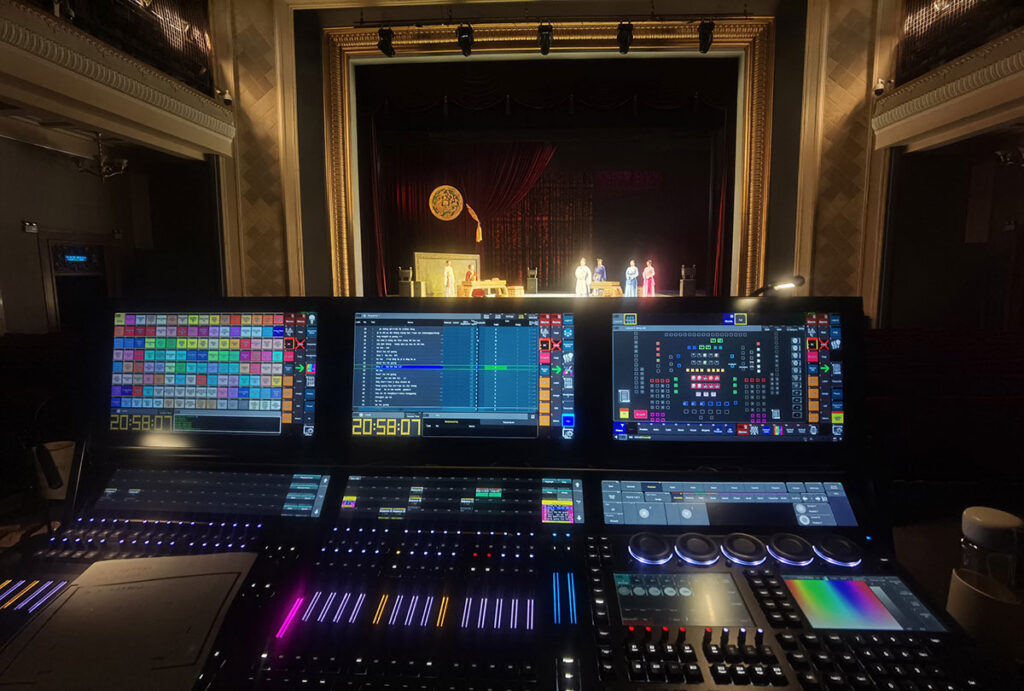The Beijing People’s Art Theatre used their new grandMA3 lighting control system for a special revival of acclaimed historical drama Cai Wenji directed by Tang Ye, which was part of the venue’s 70th anniversary season.
The work details the life story of Cai Yan, also known as ‘Wenji’, a female literary icon during the late Eastern Han Dynasty (25-220). The original production by renowned playwright Guo Moruo (1892-1978) was first staged at the venue in 1959 and is known for its poetic style and traditional Chinese aesthetics.
The original lighting design by Song Yin was reworked for this contemporary version of the show by Meng Bin, who retained all the essence and mood of more classical lighting and infused this with some modern creative twists. Lighting was programmed by Zheng Pengfei, and the stage design was by Chen Yongxiang.
Working closely with the design team was Lux Li, product promotion manager from MA Lighting’s Chinese distributor, ACE. The consoles used on this production were two grandMA3 full-sizes (live and backup) plus some new grandMA3 nodes.
The theatre’s lighting department has been running on grandMA for some years embracing all three generations of grandMA to date. Most recently, they have invested in three new grandMA3 consoles, two full-sizes and one light to replace the older desks.
Lux explained that they wanted to keep abreast of the latest technologies and having a very successful history with the brand, naturally looked at grandMA3 as a solution. They liked many features of the OS, including the power and scope of the Macro commands and the fact that the console is relatively straightforward, especially if familiar with MA architecture.
Cai Wenji”s lighting was a mix of moving lights – Vari*Lite VL3500s, VL1100s, Martin MAC 2000 washes, Fine1519 Pixies and Martin Rush MH1 Profiles – plus a substantial amount of conventionals, all of it consuming 5 universes of DMX.

Zheng Pengfei liked several grandMA3 features of the console including Selection Grid which is a neat way to organize the fixtures in relation to each other, and the Phaser Editor which allows flexible operation of the fixture’s parameters or can be utilised to dynamically create Phasers with multiple steps as well as a simple trackpad to move fixtures. “These and many more tools make programming and modification streamlined,” he commented.
He finds Scribble useful, and the fact that the current cue setting fade can be directly clicked on the time and a number added and also likes Gel Pool noting that the colour is mixed very accurately, which can save serious time in colour adjustment and tweaking. The new Programmer can copy saved effects that can be modified and re-saved which is very convenient.
Overall, his impression of grandMA3 is that the console is “very easy to use”.
The biggest challenges of lighting this show included being extremely careful with the use of colour and paying attention to the general control and accuracy needed along with the detail demanded over the production’s narrative timeline.
The theatre’s head of lighting, Fang Yi underlined the importance of a good relationship with the distributor when making a major new equipment investment like this one in grandMA3 as well as for feedback, consultation and swift and efficient support when needed, and comments that ACE provide “excellent and invaluable” technical support and training.
Photo: © Meng Bin